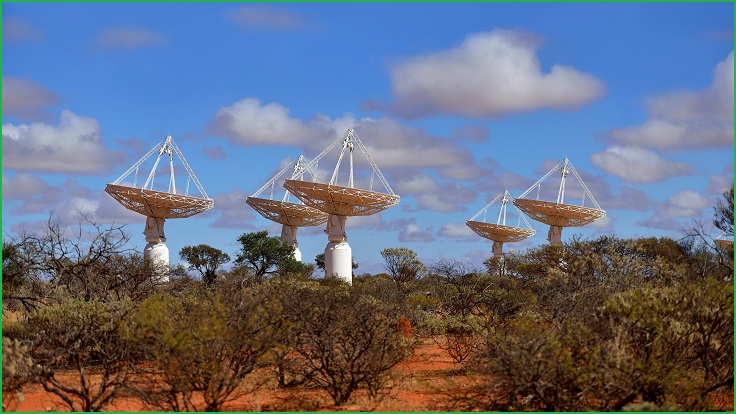A new CSIRO telescope mapped out the sky in just three weeks, building a new foundation for the future of radio astronomy.
The Australian Square Kilometre Array Pathfinder (ASKAP) started its first full survey of the celestial sphere in April last year. Its large team of scientist have just published the first results in the Publications of the Astronomical Society of Australia.
ASKAP’s rapid continuum survey used the telescope’s wide field of view allowed it to produce a full map of the sky in just 903 images.
CSIRO astronomer and lead author of the study, Dr David McConnell, said ASKAP’s first run will help create a baseline for ongoing exploration of the observable universe.
“This census of the universe will be used by astronomers around the world to explore the unknown and study everything from star formation to how galaxies and their super-massive black holes evolve and interact,” Dr McConnell said.
“For the first time ASKAP has flexed its full muscles, building a map of the Universe in greater detail than ever before, and at record speed.
“We expect to find tens of millions of new galaxies in future surveys.”
All told the telescope produced some 13.5 exabytes of raw data in its roughly 300 hours of scanning time.
That data was processed on the Galaxy supercomputer at the Pawsey Supercomputing Centre in Western Australia where it boiled down to 903 images and other information totalling 26 terabytes of data.
Radio frequency data picked up by ASKAP ran through a long processing pipeline that involved first selecting the data, then flagging and removing bad data, and correcting for other variabilities before building an image and storing it on the CSIRO’s publicly available data archive.
CSIRO CEO, Dr Larry Marshall, said the telescope would help scientists understand “the mysteries of the universe”.
“It’s all enabled by innovative receivers developed by CSIRO that feature phased array feed technology, which see ASKAP generate more raw data at a faster rate than Australia’s entire internet traffic,” he said.
“In a time when we have access to more data than ever before, ASKAP and the supercomputers that support it are delivering unparalleled insights and wielding the tools that will underpin our data-driven future to make life better for everybody.”
Simply gathering the simultaneous data flowing into the telescope’s 36 antennae created what the research paper described as “a software development challenge” when it comes to running the calibration and imaging programs faster than the observations are made.
To speed up the processing time, ASKAP’s early runs will initiate a Global Sky Model to help further calibrations.
CSIRO scientists have custom-made much of the software used to control and process ASKAP and its data – also known as ASKAPsoft.
According to a 2016 paper about the project’s science processing schema, much of ASKAPsoft was written in C++ using casacore and other third party libraries.
The code for synthesising data was custom made for ASKAP, though some algorithms were made by improving upon those included in the Common Astronomy Software Applications (CASA) package.










